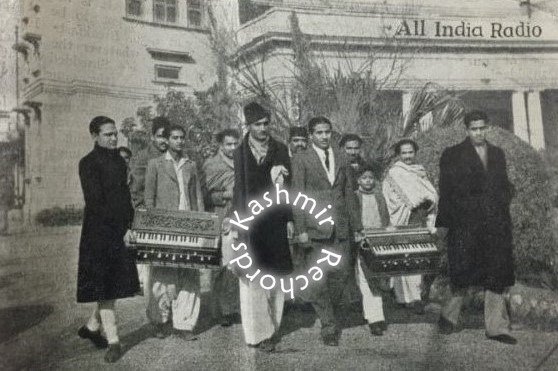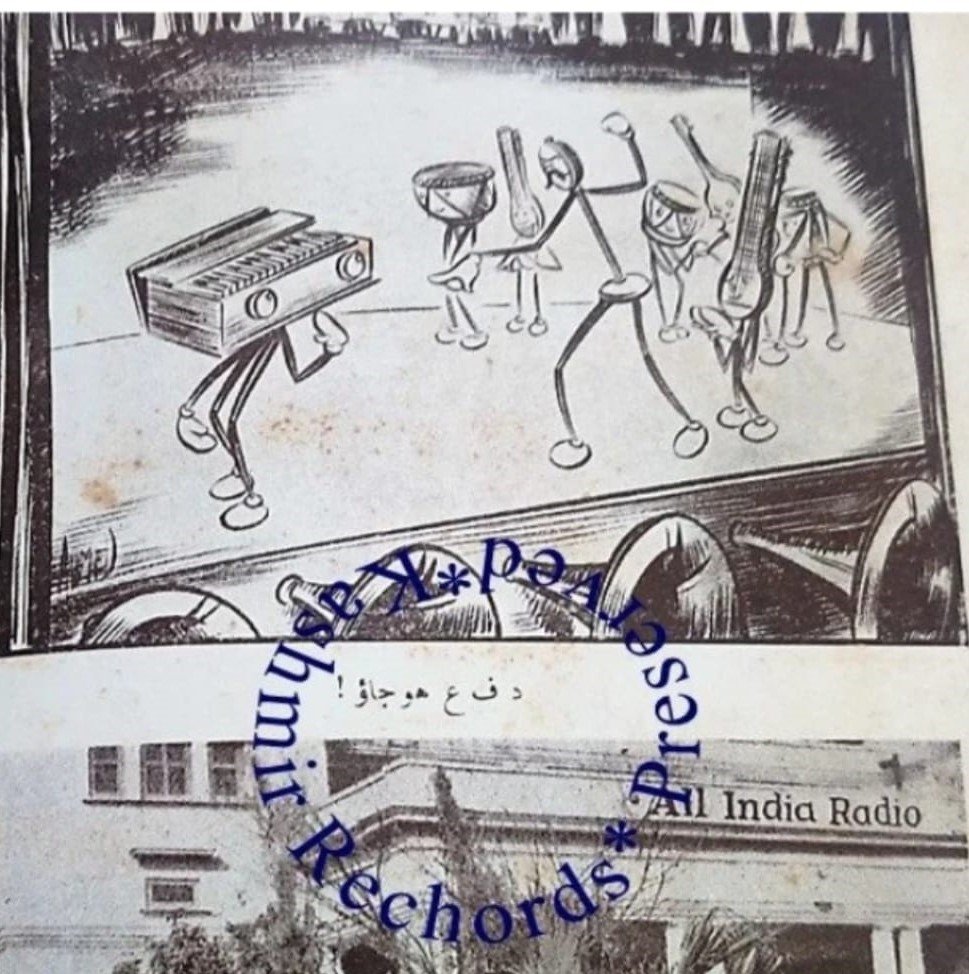🎼 A Ban Too Bizarre to Believe
(By: Kanwal Krishan Lidhoo*)
Why would a musical instrument—beloved, popular and proudly Indian-made—be suddenly declared unfit, unholy and ultimately unplayable by the nation’s own broadcaster? What crime did the humble harmonium commit to deserve a formal burial inside All India Radio’s studios in 1940? The answer lies in a curious and often overlooked chapter of India’s cultural history—equal parts musical purism, colonial hangover and bureaucratic melodrama.
📻 July 23, 1927: Harmonium’s Prime Time Debut
Exactly 98 years ago, on July 23, 1927, the first-ever radio broadcast in India crackled through the airwaves from Bombay, under the Indian Broadcasting Company.
And right there in the studio, surrounded by microphones and musical hopes, was the harmonium—steady and reliable. In those early years, it was an essential part of AIR’s programming. But its reign would be short-lived.

🎹 Why the Harmonium Was Declared a Musical Outcast
Back in 1915, India wasn’t just playing the harmonium—it was making it. We were among the world’s leading producers of this versatile little reed box. From homes to temples, classical mehfils to revolutionary gatherings, the harmonium had become a national fixture.
But just 25 years later, it was banished from All India Radio (then part of the colonial Information Department). The date was March 1, 1940, and the reason? It was declared “unsuitable for Indian classical music.” A polite way of saying: “You’re not good enough to be heard anymore.”
And so, with solemn sarcasm, AIR Lahore held a symbolic funeral. The harmonium, once central to every broadcast, was “laid to rest,” while cartoons appeared in newspapers showing other instruments telling it, “Harmonium Ka Jinaaza’‘ ,“Dafa ho jao!” (Go to hell!).

🎶The British Ear Didn’t Approve
The ghost of this decision haunts Indian music history. The culprit behind the ban? A curious alliance between colonial purists and Indian traditionalists. John Foulds, a British composer and head of Western music at AIR, believed the harmonium failed to capture the microtones—those subtle emotional inflections—that Indian ragas demand.
Lionel Fielden, the first Controller of Broadcasting in India, took this critique seriously—especially after receiving similar complaints from Indian classical musicians. The harmonium, they said, couldn’t glide or bend a note the way a sitar or sarangi could. So Fielden signed the death warrant. AIR issued a directive. Harmonium: out. Permanently.
🎼Even Nehru and Coomaraswamy Didn’t Object
The harmonium’s fate wasn’t helped by India’s cultural elite. According to documents archived by www.kashmir-rechords.com, even Ananda Coomaraswamy, the revered philosopher and cultural historian, dismissed it as “non-Indian.” Jawaharlal Nehru, still a freedom fighter then, wasn’t particularly fond of it either.
To them, the harmonium represented colonial contamination—a European relic invading India’s sacred soundscape. B.V. Keskar, post-Independence Information & Broadcasting Minister and a student of the great musicologist V.N. Bhatkhande, upheld the ban with gusto. Even free India wasn’t ready to forgive the harmonium.
🔓A French Immigrant with an Indian Passport
Ironically, the harmonium had arrived in India as a savior. Invented in France in the 19th century, it proved to be the perfect replacement for bulky pipe organs and fragile harpsichords—both of which often arrived warped after sea voyages.
The harmonium was durable, portable, and most importantly, teachable. Indian artisans quickly learned to build them. Musicians adapted it to bhajans, ghazals, qawwalis, and even classical khayal performances. In a short time, it had gone from outsider to insider—until someone flipped the cultural script.
🎶 The Rise, Fall & Return of the Harmonium in Indian Broadcasting
Year Event 1915 India becomes a leading producer of harmoniums. July 23, 1927 First radio broadcast from Bombay. Harmonium plays live. 1940 AIR bans the harmonium. Symbolic “funeral” held in Lahore. 1940–1970 Harmonium remains blacklisted due to tonal purity concerns. 1970 Ban lifted under pressure from critics and musicians. Today Thrives across Indian music traditions, but solo AIR concerts still rare. 🎤Resurrection After Three Decades
It wasn’t until 1970—a full three decades later—that the ban began to loosen. Critics pointed out the absurdity of calling a widely-used, home-grown instrument “foreign.” They argued it was ideal for teaching the grammar of Indian music, accompanying choirs, and sustaining group performances. Why treat it like a musical untouchable?
And slowly, the harmonium returned—not as a soloist, but as a quiet, reliable companion.
📝Today: From Exile to Everywhere
The harmonium has since staged a quiet rebellion. You’ll hear it in Hindustani classical, Carnatic devotional, Ghazals, Qawwalis, Bhajans, Sikh Gurbani, church choirs, and even in modern fusion. It may still be sidelined in some AIR solo broadcasts, but its spirit thrives across India’s many soundscapes.
What was once shunned as foreign is now again integral to India’s musical soul.
The harmonium’s story is a reminder of how even music isn’t safe from politics, prejudice and posturing. But it also teaches us resilience. An instrument once exiled is now a quiet revolutionary, pushing back against purism with every note it plays.
So next time you hear the gentle wheeze of a harmonium under a raga or a prayer, remember—it’s not just sound. It’s survival.
So next time you hear the soft drone of a harmonium under a raga, a qawwal’s voice, or a soulful bhajan, remember: this little instrument survived burial, banishment and decades of snobbery. Not bad for an “outsider,” eh?
- *Kanwal Krishan Lidhoo is a noted Broadcaster, Author and acclaimed Translator approved by Sahitya Akademi, New Delhi. He is a Founding Director of Kashmir Rechords Foundation.

